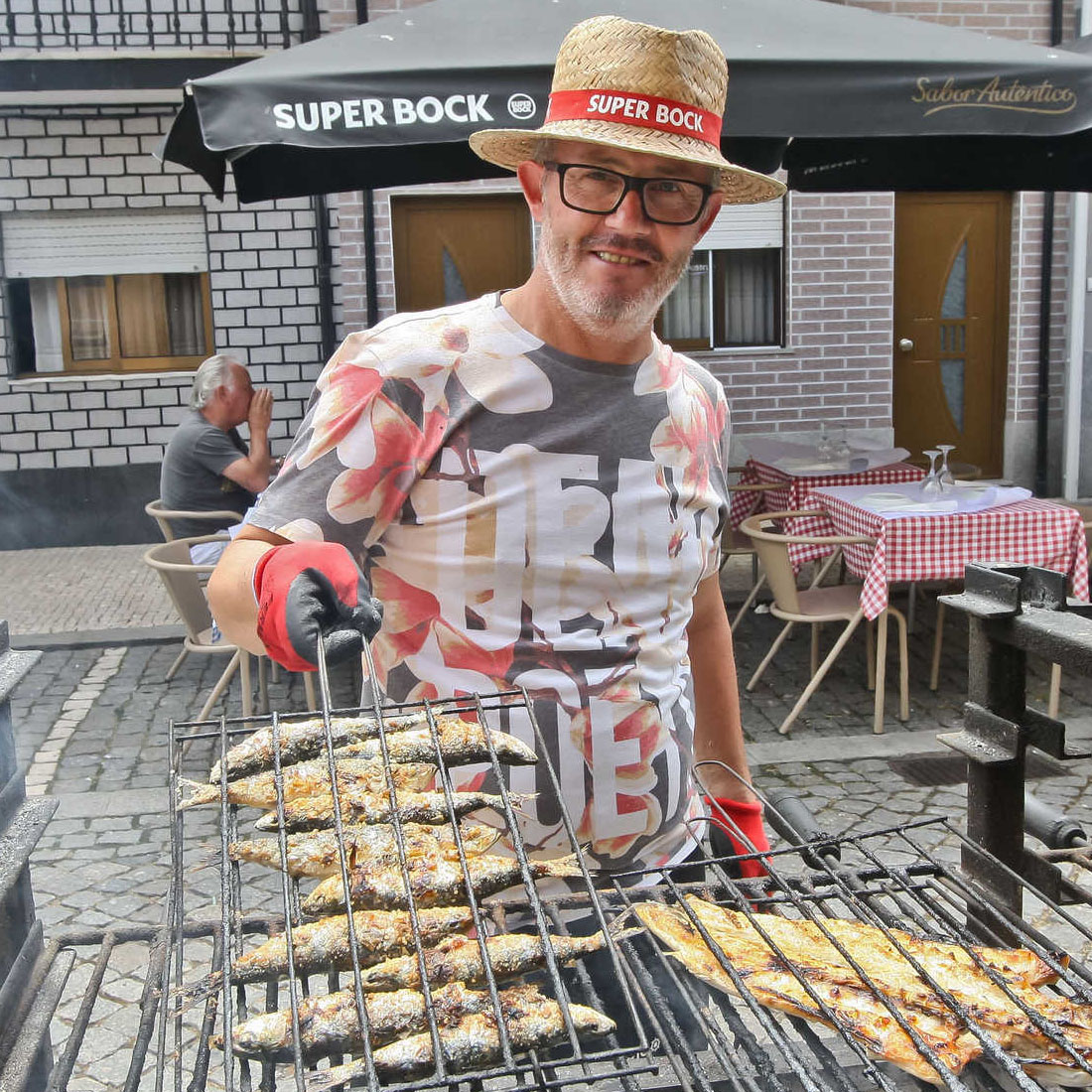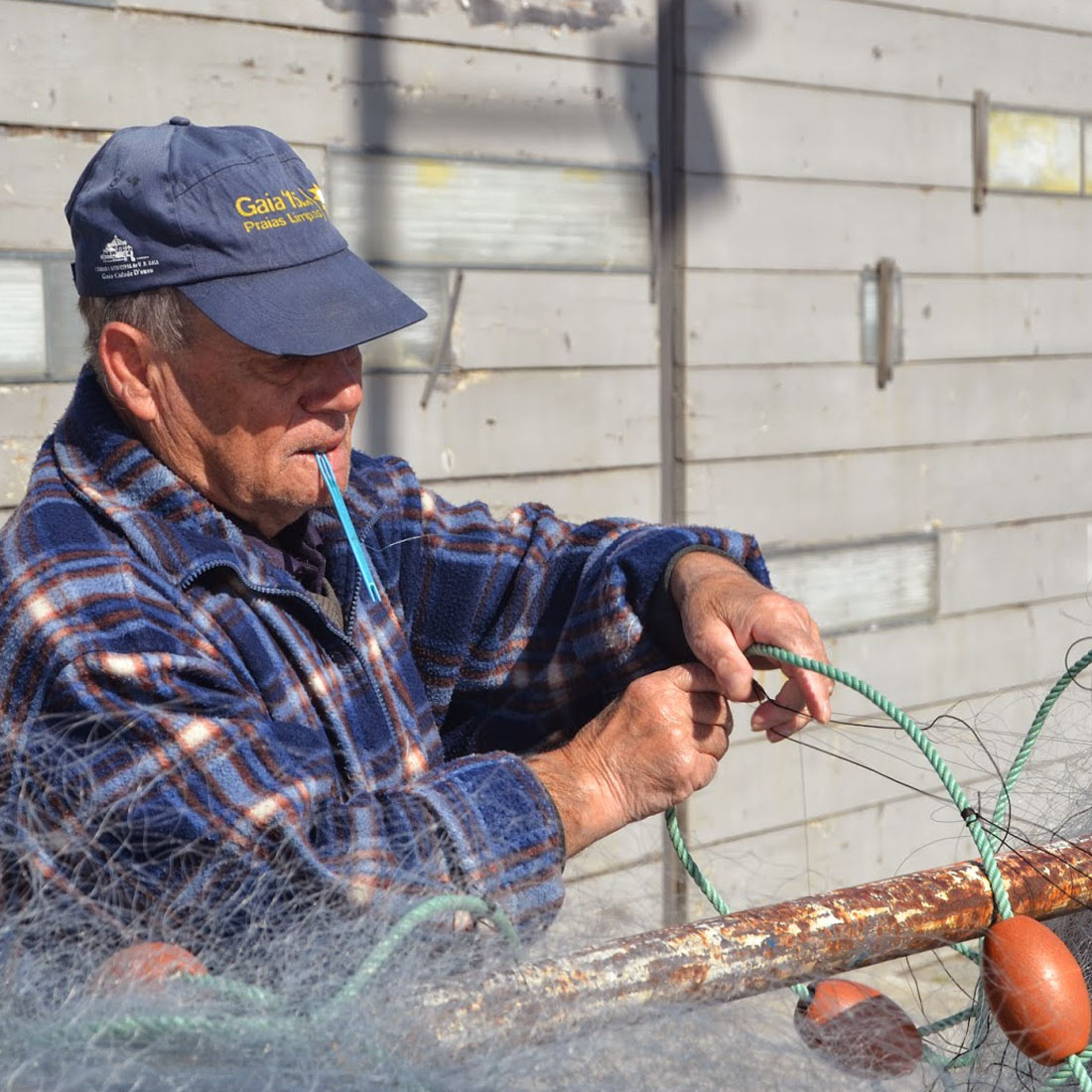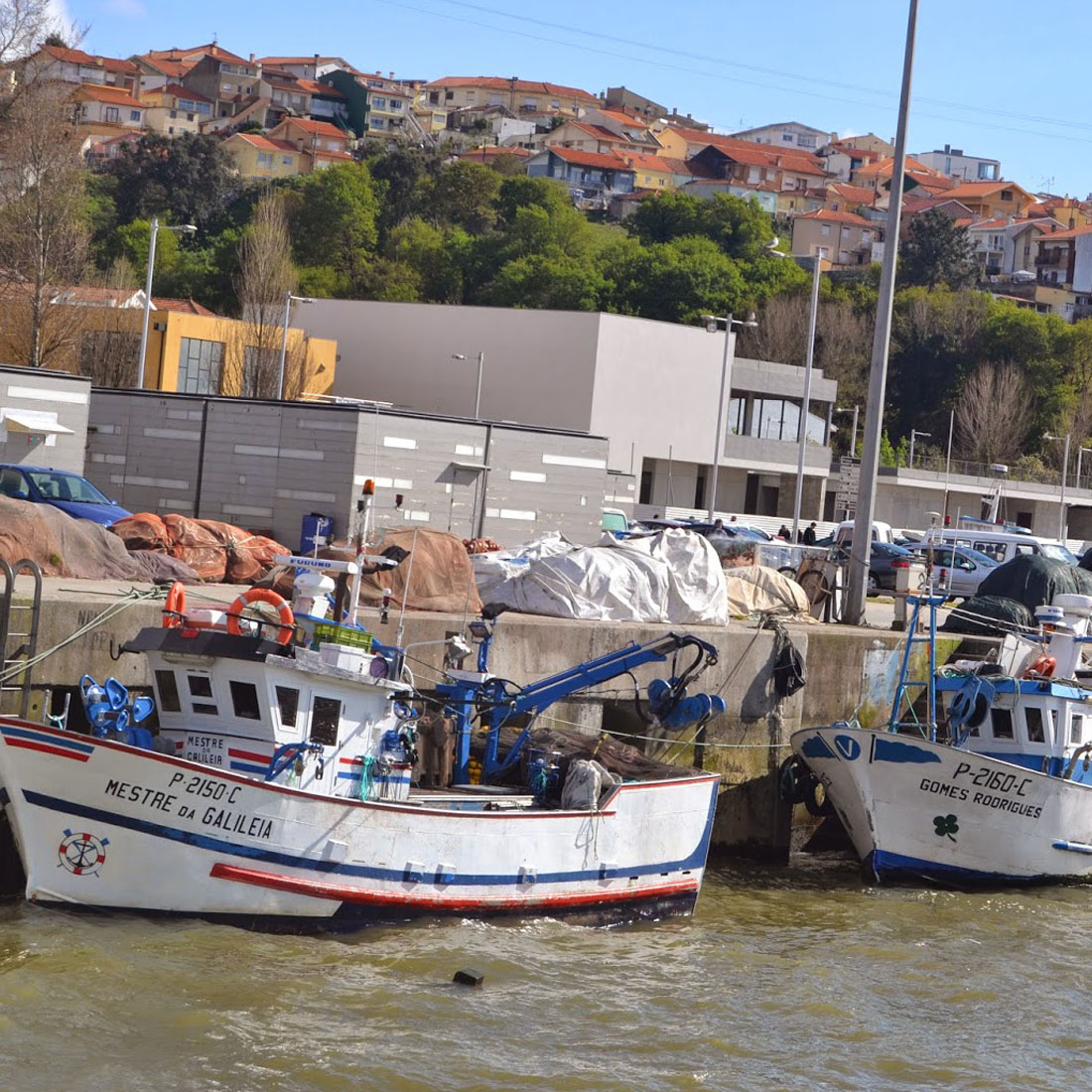OPorto Fishing Village
Since 70.00€
- Book here you tour -
Overview
Proclaimed World Heritage site from UNESCO since 1996, Porto is well known by its medieval streets in downtown “baixa” and the hospitality of its people. Get to know in first person all the streets, delightful views and Porto´s typical Port Wine Cellars, while tasting the finest nectar.
Details
Our driver will pick you up from your hotel in a modern air conditioned vehicle and will be at your disposal throughout the day. You will be transported through the streets of Porto and dropped off as close as possible to each attraction point and he will be in the vehicle waiting for you in order to avoid restrictions on parking and be as close as possible from the pick up point/each attraction. In this way, you will be able to discover the most historic points and beauty of Porto in a single day and at your own pace and avoid lots of walking in the hilly streets of the city! at the end of the day the driver will drop you off at your hotel /accommodation.
- Pick Up Point
-
Liberdade Square (Pass By) This wide avenue, bordered by a group of buildings from the 1920s and 1940s, is closed on the south side by the Cardosas building (19th century) and on the north side by the Porto Town Hall. In front of the Cardosas Palace, at the center of D. Pedro Square -, a square that is confused with Avenida dos Aliados itself because they are contiguous, - is the statue of D. Pedro IV, the Liberator.
-
The São Bento Railway Station was built in the early 20th century, in the exact location of the former Convent of São Bento de Avé Maria, a 16th-century building. This glass and iron structure was designed by architect Marques da Silva. The vestibule is adorned with twenty thousand tiles painted by Jorge Colaço that illustrate the evolution of transport and the events of history and ways of life of the Portuguese living in this region.
5 minutes stop • Admission Ticket Not Included -
The Cathedral of Porto is a building dating from the 12th/13th century that has been expanded and renovated over the centuries until its final configuration in the 20th century, always maintaining the initial configuration of a medieval cathedral. Special mentions: - Gothic Chapel of St. John the Evangelist and its cloister - The expansion of the chancel - Chapel of the Blessed Sacrament and its silver altar.
10 minutes stop • Admission Ticket Not Included -
D. Pedro Pitões Tower / Medieval Tower It is a medieval tower discovered at the time of the construction of the front courtyard of the Cathedral. It was then relocated to the side of the Cathedral, and rebuilt there. This is where Porto Tourism Office is located.
-
Building of Gothic origin whose original construction dates from the fifteenth century. However, in the seventeenth century, it underwent some changes on which the beautiful Renaissance portal was added, as well as the gilded carving inside.
-
This wall began its works in the fourteenth century, in the reign of D. Afonso IV, to replace the old wall and cope with the expansion of the city. Although it was almost completed around 1370 its completion was only in the reign of D. Fernando, in 1409, hence the name assigned. In the 18th century, after no longer being needed in military terms, the wall began to be demolished and only a few parts survived to this day.
-
Placed in front of D. João I Square, the Theatre was inaugurated in 1913 but the changes in the urban centre created the need to rethink and modernize this Theatre. After the refurbishment of the former National Theatre in 1913, the Rivoli Theatre was inaugurated in 1932, adapted to the cinema and with the programming of opera, dance, theatre and concerts. In 1989 it became the property of the Porto City Council and closed in 1992 for a total remodelling and expansion, being completed in 1997.
-
Designed by Carlos Amarante in neoclassical style, it was financed by the Literary Grant, a tax on wine, in 1803. The building, of classic style, has some similarities with the Hospital Santo António. In 1911, it housed the Faculty of Sciences and is currently home to the Rectory and the Museum of Natural History and the Museum of Science of the University of Porto.
-
The Clérigos Tower is one of the most emblematic monuments of the city of Porto. This Baroque work by Nicolau Nasoni was built in the first half of the 18th century. It provides a panoramic view of the city and the Douro River, which can be seen from the top of the tower, makes climbing 240 steps worth the effort. Interestingly, this tower appeared in the 2021 Hollywood blockbuster film "Suicide Squad."
10 minutes stop • Admission Ticket Not Included -
The building where this bookstore is located was opened in 1906. Classified as a building of public interest, its beautiful Art Nouveau façade, with Neo-Gothic details, is noteworthy. Inside, the library is decorated with painted plaster imitating wood and features a magnificent staircase that connects it to the upper floor, one of the first works of reinforced concrete of Porto. Also worthy of attention is the huge stained-glass skylight, with the monogram and the motto of the library.
-
This railway structure, by Edgar Cardoso, connects the Campanhã station in Porto to all destinations in the South. Its inauguration took place on St. John's Day on June 24, 1991. The bridge adopts a gantry solution, with three spans (two of 125m and one of 250m) supported by two majestic pillars founded on the Douro River bed near each of the banks.
-
Created to replace the suspension bridge, it is Gustave Eiffel's first masterpiece - in which he worked with his partner and former disciple Theóphile Seyrig - and was inaugurated in Porto in 1877 and remained in operation for 114 years until its use was replaced by São João Bridge. It consists of a biarticulated arch that supports the single-track rail board through truss pillars.
10 minutes stop • Admission Ticket Not Included -
The bridge was inaugurated on March 30, 2003, after a project by engineer Adão da Fonseca, to replace the top of the D. Luís I Bridge through which currently one of the Porto Metro lines passes. With a deck of 371 meters long and 20 meters wide, it is a bridge in arch of the Maillart type, with a span/arrow ratio of 11.2m for a 280m arch span, thus being a world record, of domains never before achieved in this typology of bridges. It is a type of bridge considered the slenderest by experts.
-
In 1879, the government determines the opening of a tender for the "construction of a metal bridge over the Douro River, in the place that is most convenient in front of the city of Porto, for the replacement of the current suspension bridge". The proposal of the Belgian company Société de Willebroeck was the winner, with a project by Engineer Teófilo Seyrig, who had already worked with Gustave Eiffel on the construction of the Ponte D. Maria Pia. The bridge was inaugurated in 1886 (upper board) and 1888 (lower board and full operating entrance). This bridge, covered by the whole of the Historic Center of Porto on the UNESCO World Heritage list, consists of the largest wrought iron arch in the world.
-
The suspension bridge, officially called D. Maria III, was created as a necessity for a permanent bridge that would connect Porto and Gaia. This work of the French company Claranges Luccote et Compagnie, was inaugurated in 1843, but was deactivated after four years due to a feeling of insecurity of those who passed through it. Currently, there are only two stone pillars left, shaped like an obelisk.
-
Classified as a National Monument, the Palácio da Bolsa is the property and place of the Commercial Association of Porto. It was designed by Joaquim da Costa Lima in neoclassical style in 1842 and built on the site of the former Convent of San Francisco, which was completely destroyed in a fire at the time of the Siege of Porto. Situated in the historic center, it is one of the most visited monuments, with the famous Arab Room as its highlight. A Cultural and Conference Center, the Bolsa Palace is a place with unique conditions for holding events.
-
This building is extremely representative of the religious architecture of Porto in the late 17th century. It is also part of a mannerist style trend, although one can see some Baroque influence. The nave comprises the remarkable altarpiece that shows the beautiful image of St. Nicholas, patron saint of metalworkers.
-
The most important Gothic temple of the city, with construction begun in the fourteenth century, is one of the most important works of the Baroque, for its golden interior of the seventeenth and eighteenth centuries. It was the exuberance of his carved woodwork that led Count Raczinsky to describe it as a "Church of Gold". And, impressed, he adds: 'This church is so beautiful and rich that it goes far beyond everything I've seen in Portugal and around the world.' It is worth observing the Tree of Jesse, as well as visiting the catacombs. It has been classified as a National Monument since 1910 and a UNESCO World Cultural Heritage Site since 1996.
10 minutes stop • Admission Ticket Not Included -
This neoclassical building, built in the 19th century by engineer Jean FG Colson, has two façades, one facing the Douro River and the other facing the city. The use of constructive techniques that use the use of iron in conjunction with other materials - stone, brick or wood - depending on the functionality of the different spaces, makes this space very interesting to observe. In 1992 the Museum of Transport and Communications opened.
-
Inaugurated in 1992, the Electric Car Museum contains a set of trams and other auxiliary vehicles that used to circulate through the streets of Porto and that have left a mark on the history of light rail transport in the city. Their holdings also include an example of American horse-drawn trolley buses that were first introduced to Porto in 1872. Housed in the former Massarelos central, a listed municipal building, the museum also displays some of the original equipment used previously.
-
The Arrábida Bridge, designed by Edgar Cardoso and with an extension of 270 meters, was, for some time, the longest reinforced concrete bridge in the world. Inaugurated in 1963, it is 70 meters above the average water level. The bronze sculptures are located on top of the four large pillars that support the central extension, adding a modern innovative spirit to the bridge.
-
This fort, which is a beautiful example of Portuguese military architecture, was built at the end of the 16th century to protect the coast and the entrance to the Douro. Modern fortresses have been added in the sec. XVII to the original structure and the access gate to the fort (18th century).
10 minutes stop • Admission Ticket Not Included -
Fort São Francisco Xavier (Cheese Castle) São Francisco de Xavier Fort was built in the 17th century to protect the coast from the pirates of North Africa. It is located on a rocky hill in the form of cheese, thus obtaining the name Castelo do Queijo (Cheese Castle).
10 minutes stop • Admission Ticket Not Included -
Designed by Dutch architect Rem Koolhaas, Porto's main concert hall is located in the Boavista area and is called Casa da Música. It was inaugurated in 2005 and has since become an icon of contemporary architecture.
- Drop Off
| Pick Up - Drop Off | At your hotel, lodging in Porto or Leixões Cruise Ship Terminal |
|---|---|
| Start - End | 09:00h - 12:00h or 14:00h - 17:00h (approx) |
| Icluded |
- Pick up/drop off at your location - Certified Tourist Driver. - Private transport - Top class vehicle - Free Wi-Fi - Bottled water - Insurances and fees |
| Extra |
- Adicional Stop- €15.00 each |
| Not Included |
- Lunch - Tickets - Gratuities (optional) - Personal expenses - Any service that is not clearly specified in the inclusions |
Not sure this is the right tour for you?
That’s totally fine! Besides our standard tours, we also design personalised tours according to your preferences and pace. Just send us a message and we’ll shortly get in contact with you.
Contact Us© 2023 LATITUDE 351
All Rights Reserved.



